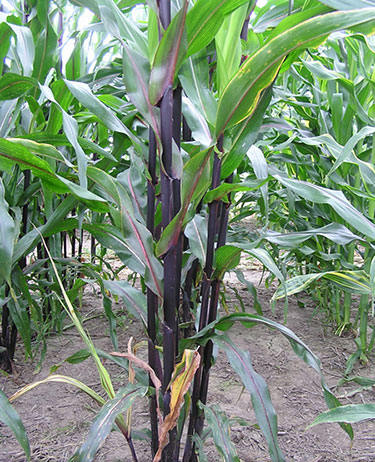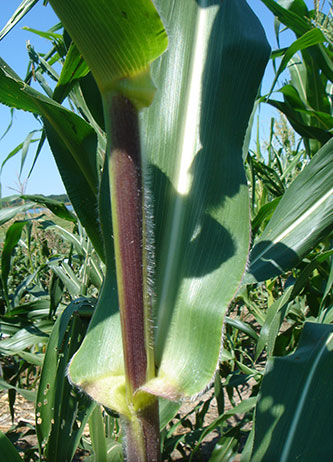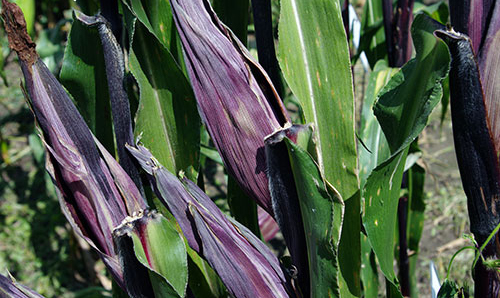
Purple Plant
Plants produce an abundance of a pigment called anthocyanin. The color of anthocyanin is pH-dependent and ranges from red to blue. In corn, the buildup of anthocyanin pigment usually results in purple coloration. Plant tissues that express the purple color are determined by the presence of other genes.

 "
"



